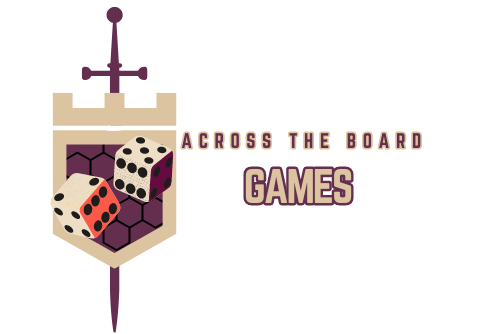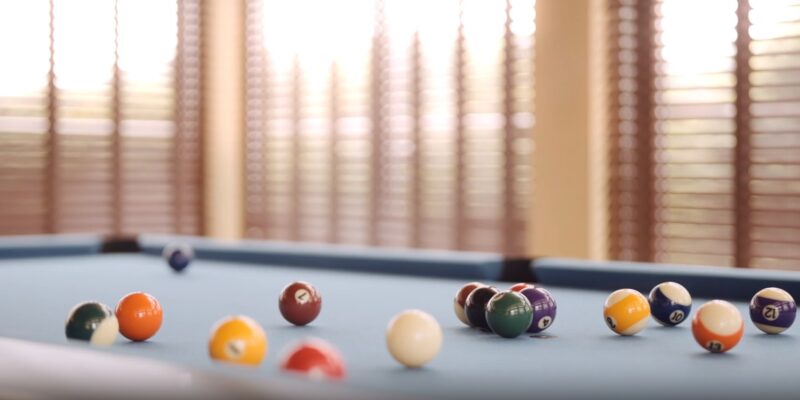Billiards and pool, two of the most renowned cue sports, have captivated players worldwide with their unique blend of skill, strategy, and precision. At first glance, these games may appear similar, often leading to confusion among enthusiasts.
However, a closer examination reveals distinct differences, particularly in the tables used for each sport. Billiards, often considered the more traditional of the two, is played on a larger table without pockets.
In contrast, pool tables are smaller, featuring pockets where players aim to sink the balls. This fundamental difference in table structure significantly influences gameplay, strategies, and rules of each sport.
Physical Characteristics
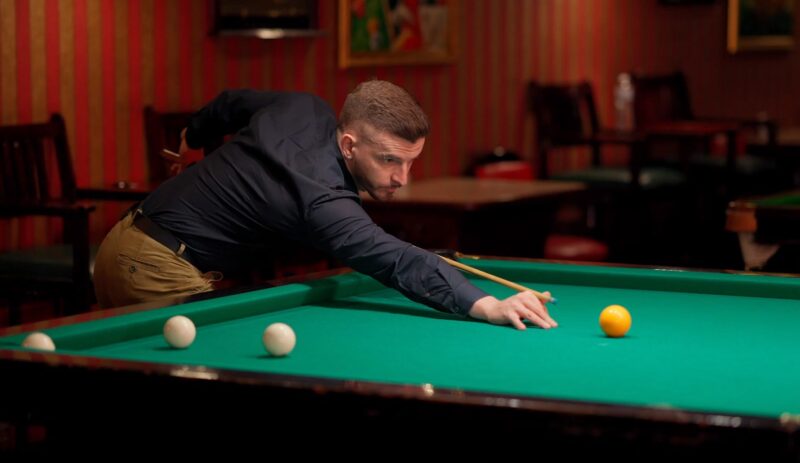
Billiards is a term that refers to a variety of cue sports played on a table without pockets. The most common types of billiards are carom billiards, which involves hitting balls with a cue stick and making them bounce off cushions, and English billiards, which involves scoring points by pocketing balls or hitting them against other balls or the cushions.
Billiards tables are usually rectangular and have a flat surface covered with a cloth made of worsted wool. Worsted wool is a high-quality type of wool yarn that is smooth, strong, and fine. It is named after the village of Worstead in England, where it was first produced in the 12th century.
Worsted wool is ideal for billiards tables because it allows the balls to roll smoothly and consistently, and it is resistant to wear and tear. The standard dimensions of a billiards table vary depending on the type of game and the region where it is played. However, some common sizes are:
- 10 ft x 5 ft (3.05 m x 1.52 m) for carom billiards
- 12 ft x 6 ft (3.66 m x 1.83 m) for English billiards and snooker
- 9 ft x 4.5 ft (2.74 m x 1.37 m) for American-style carom billiards
The height of a billiards table is usually between 29 and 31 inches (74 and 79 cm) from the floor to the top of the cushion. The cushion is the padded edge of the table that surrounds the playing surface and helps the balls bounce off. The cushion is usually made of rubber or synthetic material and covered with the same cloth as the playing surface.
Why There Are No Pockets in Traditional Billiards Tables?
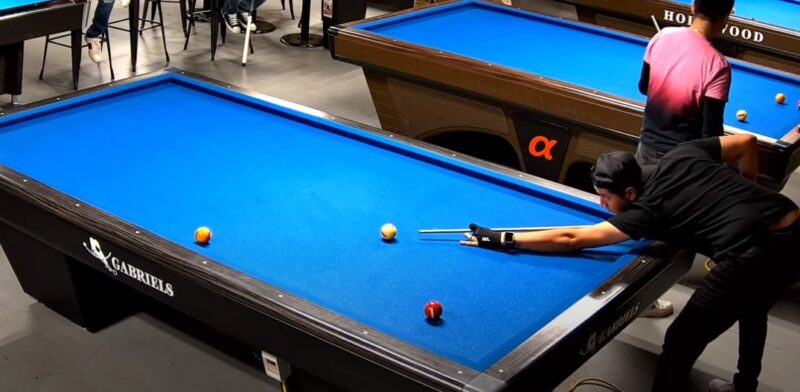
This is because billiards games do not require the balls to be pocketed, but rather to be hit against other balls or the cushions. Pockets would interfere with the trajectory and rebound of the balls, and make the game less challenging and skillful.
However, some modern options have pockets that can be covered or removed when playing billiards games. These tables are designed to accommodate both billiards and pool games, and are sometimes called convertible tables. They are popular among recreational players who want to enjoy both types of cue sports without having to buy or install separate tables.
How Are Pool Tables Different?
The most common types of pool are eight-ball, nine-ball, and straight pool, which involve different rules and objectives for pocketing the balls. Pool is also known as pocket billiards, and is widely played in bars, clubs, and homes around the world.
Pool tables are usually rectangular and have a flat surface covered with a cloth made of wool or a blend of wool and synthetic fibers. The cloth can be of different colors, but green is the most traditional and common.
The cloth affects the speed and spin of the balls, and can be of different qualities and grades. The best pool table cloth is not actually felt, but a tightly woven fabric that is smooth and durable. The standard dimensions of a pool table depend on the type and level of play. However, some common sizes are:
- 7 ft x 3.5 ft (2.13 m x 1.07 m) for bar or coin-operated tables
- 8 ft x 4 ft (2.44 m x 1.22 m) for home or recreational tables
- 9 ft x 4.5 ft (2.74 m x 1.37 m) for professional or tournament tables
The height of a pool table is usually between 29 and 31 inches (74 and 79 cm) from the floor to the top of the cushion. The cushion is the padded edge of the table that surrounds the playing surface and helps the balls bounce off.
The cushion is usually made of rubber or synthetic material and covered with the same cloth as the playing surface. There are six pockets on a pool table, one at each corner and one at the middle of each long side.
The pockets are usually made of leather or plastic, and can be of different shapes and sizes. The pockets can be either drop pockets, which collect the balls inside the table, or ball return pockets, which send the balls to a collection area at one end of the table.
| Feature | Billiards Table | Pool Table |
|---|---|---|
| Pockets | No | Yes |
| Cloth | Worsted wool | Wool or wool blend |
| Size | 10 ft x 5 ft, 12 ft x 6 ft, or 9 ft x 4.5 ft | 7 ft x 3.5 ft, 8 ft x 4 ft, or 9 ft x 4.5 ft |
| Use | Carom billiards, English billiards, or snooker | Eight-ball, nine-ball, or straight pool |
| Design | Simple and elegant | Diverse and customizable |
Gameplay and Rules
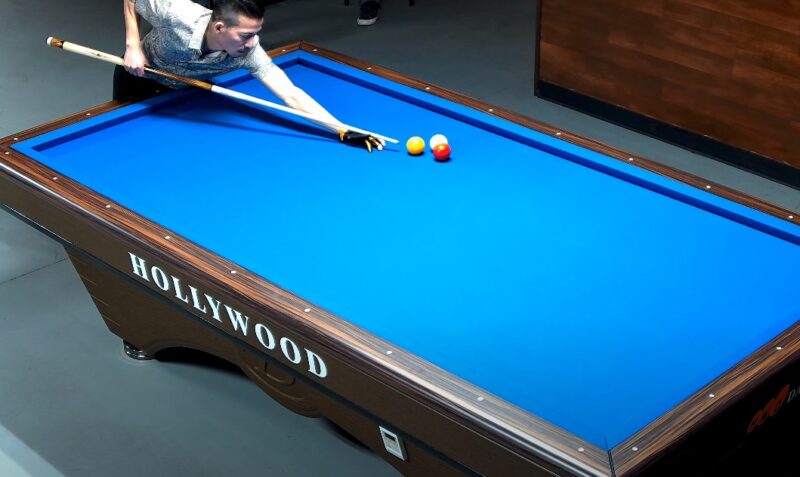
The most common types of billiards are carom billiards, which involves hitting balls with a cue stick and making them bounce off cushions, and English billiards, which involves scoring points by pocketing balls or hitting them against other balls or the cushions.
The objective of billiards depends on the specific game being played, but generally it is to score more points than the opponent by executing skillful shots.
Points are scored by making cannons (hitting both the opponent’s ball and the red ball in one shot), pots (pocketing a ball), or in-offs (pocketing the cue ball after hitting another ball). The scoring system of billiards is as follows:
- A cannon: This is where the cue ball is struck so that it hits the red and other cue ball (in any order) on the same shot. This scores two points.
- A pot: This is when the red ball is struck by the player’s cue ball so that the red ends up entering a pocket. This scores three points. If the player’s cue ball strikes the other cue ball resulting it going down the pocket, then this scores two points.
- An in-off: This occurs when a player strikes their cue ball, hitting another ball and then entering a pocket. This scores three points if the red was the first ball hit and two points if it was the other player’s cue ball hit first.
Pool is Quite Different When it Comes to Rules
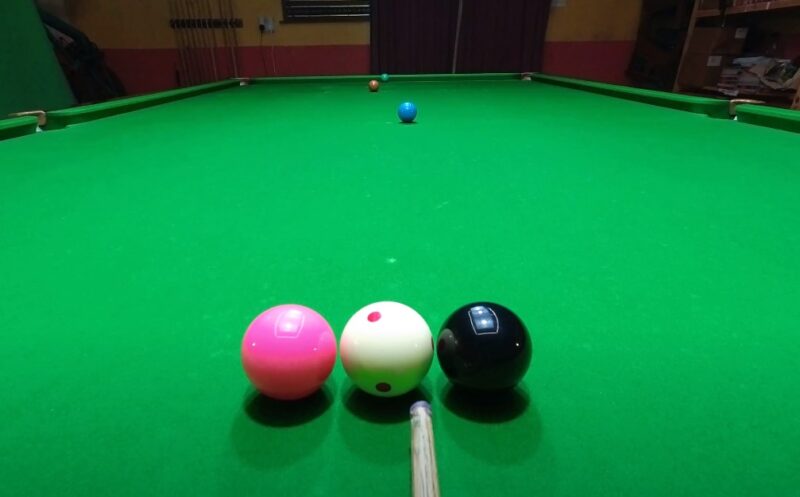
The objective of pool is to pocket the assigned balls (either solids or stripes) and then the 8-ball (in eight-ball), the 9-ball (in nine-ball), or all the balls in numerical order (in straight pool).
The player must hit the cue ball with a cue stick and make it contact the object ball before any other ball. The player must also avoid fouls, such as scratching the cue ball, hitting the wrong ball, or failing to hit a rail after contact. It is a game that requires skill, strategy, and luck. Some of the basic strategies of pool are:
- Planning ahead: The player should think about the position of the cue ball and the object balls, and plan the best shots to pocket the balls and set up the next shots.
- Controlling the cue ball: The player should use the right speed, spin, and angle to make the cue ball go where they want it to go, and avoid leaving it in a bad spot for the opponent.
- Playing defense: The player should try to make it difficult for the opponent to make a shot, by blocking the object balls, hiding the cue ball, or leaving it in a tight spot.
- Taking risks: The player should weigh the pros and cons of taking a risky shot, such as a bank shot, a jump shot, or a combination shot, and decide if it is worth the reward or the penalty.
Different Types of Pool
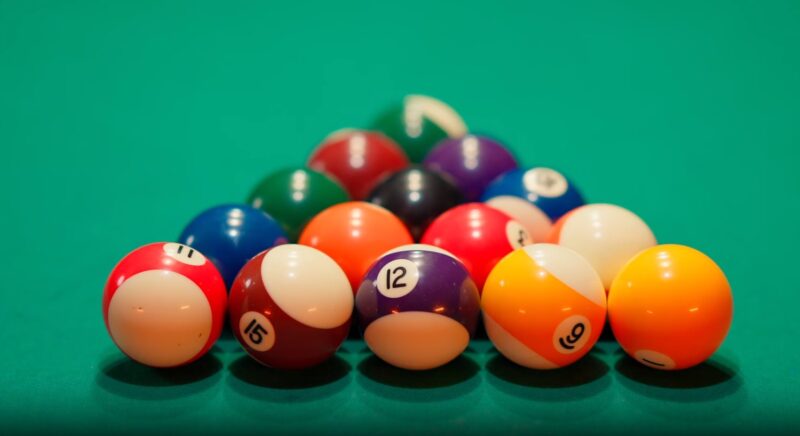
Pool has many variations and game types, but some of the most popular ones are:
- Eight-ball: This is the most common and widely played pool game in the world. It is played with 15 object balls (7 solids, 7 stripes, and 1 black 8-ball) and a cue ball. The players must pocket their assigned group of balls (either solids or stripes) and then the 8-ball to win the game. The players must call their shots, specifying the ball and the pocket. If a player pockets the 8-ball before their group or in the wrong pocket, they lose the game.
- Nine-ball: This is a fast-paced and exciting pool game that is popular among professionals and amateurs. It is played with 9 object balls (numbered 1 to 9) and a cue ball. The players must hit the lowest numbered ball on the table first, and pocket the balls in any order. The player who pockets the 9-ball wins the game. The players do not need to call their shots, unless specified by the rules.
- Straight pool: This is a classic and challenging pool game that requires a high level of skill and strategy. It is played with 15 object balls (numbered 1 to 15) and a cue ball. The players can pocket any ball on the table, but they must call their shots, specifying the ball and the pocket. The player who reaches a predetermined number of points (usually 100 or 150) wins the game. The balls are re-racked when only the cue ball and one object ball remain on the table.
FAQs
What is the difference between billiards and pool?
Billiards and pool are both cue sports, but they have different rules, objectives, and equipment. Billiards is played on a table without pockets, and the goal is to score points by hitting balls against other balls or the cushions. Pool is played on a table with pockets, and the goal is to pocket the assigned balls and then the 8-ball, the 9-ball, or all the balls in numerical order.
How can I learn to play billiards and pool better?
The best way to learn to play billiards and pool better is to practice regularly and learn from more experienced players. You can also watch online videos, read books and magazines, or join a club or a league to get tips and feedback. You can also improve your equipment, such as your cue stick, your cloth, and your balls, to suit your style and preference.
What are some common terms and expressions used in billiards and pool?
The most common terms and expressions used in billiards and pool are:
- Break: The first shot of a game, where the player hits the rack of balls and spreads them on the table.
- Cue: The stick used to hit the balls.
- Rack: The triangular frame used to arrange the balls at the start of a game.
- Scratch: A foul where the cue ball is pocketed or leaves the table.
- Shot clock: A timer that limits the time a player can take to make a shot.
- Stroke: The motion of the cue and the arm when hitting the ball.
What are some fun and creative ways to play billiards and pool?
There are many fun and creative ways to play billiards and pool, such as:
- Cutthroat: A game where three players each have five balls, and the goal is to eliminate the other players’ balls while keeping your own.
- Bank pool: A game where the players must bank the balls off the cushions before pocketing them.
- One pocket: A game where each player has only one designated pocket to shoot at, and the first to score eight points wins.
- Speed pool: A game where the players must pocket all the balls as fast as possible, and the fastest time wins.
Summary
Billiards and pool are both popular and enjoyable cue sports that can be played by anyone, anywhere. They have different origins, rules, objectives, and equipment, but they also share some common elements, such as the cue, the balls, and the table. Both can improve your physical and mental skills, as well as your social and recreational life.
Whether you prefer the elegance and precision of billiards, or the excitement and diversity of pool, you can always find a game that suits your taste and level. Billiards and pool are more than just games, they are art forms that require skill, strategy, and creativity.
